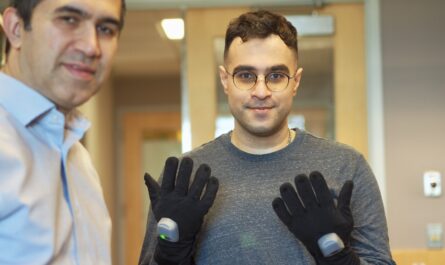In a groundbreaking study conducted in Finland, researchers have shed light on the connection between birth weight and the risk of developing cardiovascular disease in adulthood. The study, which emphasizes the role of shared genetic factors between mothers and their children, challenges previous theories and provides important insights into the biological mechanisms behind this phenomenon. The findings, published in the journal Communications Biology, suggest that genetic factors inherited from the mother have a significant impact on the child’s future health.
For decades, numerous studies have examined the relationship between birth weight and adult diseases, consistently showing that individuals born with lower birth weights are more likely to develop hypertension and heart disease later in life. However, the exact biological cause of this association has remained elusive, with conflicting research and no conclusive evidence. One prevailing hypothesis suggests that inadequate nutrition during pregnancy hampers the fetus’s metabolism, making it more susceptible to cardiovascular problems during periods of over-nutrition.
The recent study, led by Academy Research Fellow Taru Tukiainen, offers a different perspective by highlighting the contribution of shared genetic risk factors between mothers and their offspring. The researchers discovered that maternal genes influencing fetal growth have a birth weight-independent effect on the child’s subsequent risk of heart disease. However, these genes only influence disease risk if they are inherited by the child.
Jaakko Leinonen, a Postdoctoral Researcher at the Institute for Molecular Medicine Finland (FIMM) at the University of Helsinki, explains that certain maternal genes influence the growth conditions of the fetus in the womb, consequently influencing the child’s birth weight. The child then inherits a copy of these genes from the mother. The study found that small changes in fetal growth due to the mother are unlikely to have a significant impact on the child’s risk of developing the disease in adulthood. Instead, the child’s own genes play a more crucial role in determining their future health outcomes.
The research team analyzed genetic data from over 36,000 mother-child pairs, all part of the extensive Finnish genomics study, FinnGen. By considering both maternal and child genetic factors simultaneously, the study was able to yield more comprehensive and accurate results compared to previous studies that failed to distinguish between the effects of the mother’s genes versus the child’s genes.
Dr. Taru Tukiainen, the lead researcher, emphasized the effectiveness of their research methodology, which utilizes genetic data from both mothers and their children. This approach has provided valuable insights into how maternal health and the conditions experienced by the fetus in the womb influence the child’s long-term well-being. The study conducted is the largest of its kind to date and serves as a testament to the power of the FinnGen database in advancing scientific understanding.
While the recent findings offer significant progress in unraveling the connection between birth weight and adult morbidity, further research is required to fully grasp the impact of being born significantly underweight or experiencing substantial changes in birth weight on disease risk in adulthood. Dr. Taru Tukiainen expressed pride in the unique research dataset, FinnGen, which has allowed Finnish scientists to address challenging research questions and find solutions that were previously inaccessible.
This innovative Finnish study not only clarifies the link between birth weight and adult morbidity but also highlights the vital role of genetic factors inherited from mothers. With a deeper understanding of these mechanisms, researchers can now strive to develop more targeted approaches to prevent and manage cardiovascular diseases in individuals who were born with lower birth weights.
*Note:
1. Source: Coherent Market Insights, Public sources, Desk research
2. We have leveraged AI tools to mine information and compile it


